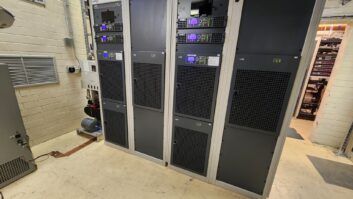Radio World Buyer’s Guide articles are intended to help readers understand why their colleagues chose particular products to solve various technical situations. This month’s articles focus on codecs and STLs.
Beasley Media Group’s robust presence in the Philadelphia market includes several of the region’s most iconic FM radio stations, including WMGK, WMMR and WPEN. As an engineering professional for Beasley’s Philadelphia and New Jersey stations for nearly two decades, Don Melnyk has had direct line of sight into the technology shifts that keep these beloved brands moving forward.
HD Radio has been one initiative, with Melnyk overseeing recent implementations of GatesAir’s FMXi 4G embedded importer/exporter solutions with built-in diversity delay. However, Beasley’s journey with Intraplex transport and networking solutions in Melnyk’s region has perhaps been the most interesting.

“When HD Radio surfaced in 2004, we knew we would need very high-speed data transport to our transmitter sites,” said Melnyk, who today serves as regional director of engineering and IT.
“It was very expensive back then to use true point-to-point ethernet circuits, so many broadcasters, including Beasley, used T1 systems. We had many Intraplex T1 systems in operation at the time, and they were extremely reliable but offered limited bandwidth.”
Melnyk discovered GatesAir’s Intraplex IP Link codecs around 2015, which opened new transport and networking opportunities.
“There was an immediate comfort zone,” said Melnyk. “The IP Links maintained the same reliability we enjoyed with Intraplex T1 systems for STL transport, and they are very easy to configure. We have since found that this is also a very flexible technology to deploy.”
Melnyk points to one example as a likely standard-bearer for Beasley stations. “We have a wired Ethernet fiber circuit work as our primary, and have installed an Intraplex HD Link for our 950 MHz microwave as a secondary feed, which connects to an IP Link,” he said.
“We also have separate IP Links for additional redundancy. The IP Links include Dynamic Stream Splicing, which repairs streams at the receive point if packets are lost in transit. That maximizes our reliability.”
There is also the benefit of longevity with Intraplex products. Several Intraplex T1 systems remain in service, though Melnyk expects to phase these out as his new multi-layer transport model takes hold.
“Those old frames continue to serve us well, but the costs of T1 transport have gone through the roof,” he said. “We will save $2,400 a month per station upon transitioning from T1 to IP.”











